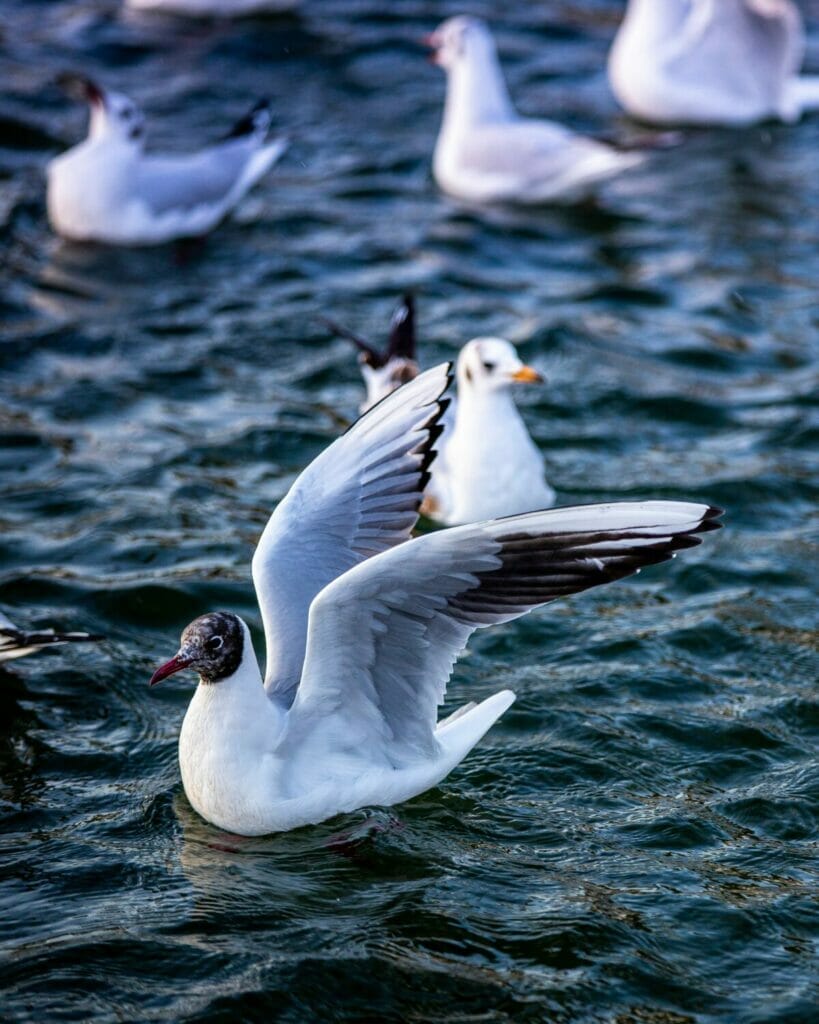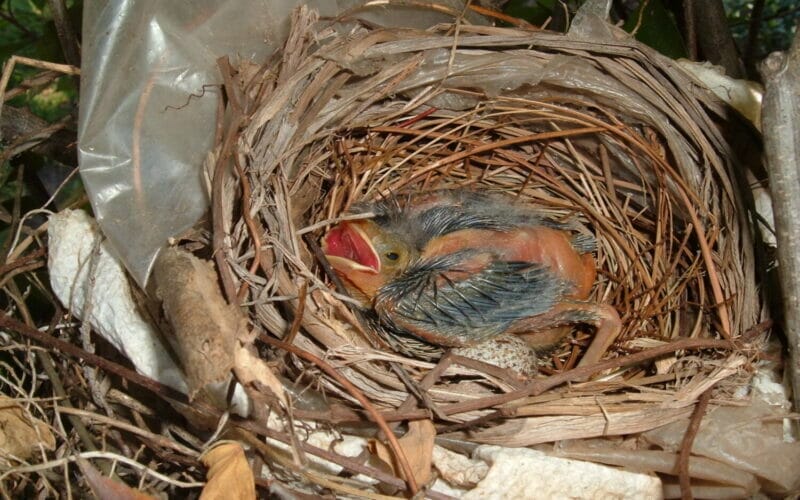Migration can be defined as animals moving to warmer climates to escape the cold of winter. Many animals will do it for survival and will travel back and forth to the same places throughout their lifetime.
Migration is very common for a variety of species in the animal kingdom. This is especially true of birds. Every year, thousands upon thousands of birds will migrate across the sky from one land to another.
But, is the seagull one of them?
Seagulls are best known for crowding the beaches and stealing our sandwiches, and we are all so focused on saving food from their clutches that we have let their migration habits slip under our radar.
Until now. In this article, I will discuss whether or not seagulls migrate, and if so, why and where? If you’re interested in seagull migration, be sure to read on for more!
What is a seagull?
There is actually no such bird as a seagull.
Surprised? Well, we all know these loud, sometimes aggressive birds that are a feature of beach and surrounding areas. But think about it. Have you seen them anywhere else?

The American Herring Gull (Larus argentatus) is the most common gull across America, even Alaska and Hawaii. You can see this clearly in the eBird Range Map below. In fact, the Herring Gull can be found across the globe.

As you can see, this gull (and over 25 other species regularly seen in the U.S.) is not only present on the coast. It is true that they prefer the habitat of coastal areas but gulls can also be seen near any body of water, on open fields and, of course, garbage dumps.
Seagull is a misnomer. So, we will refer to this class of birds as gulls from now on.
Do gulls migrate?
Yes, gulls do migrate. However, this is not true of all species of gull. While most of them will migrate, some of them prefer to stay in their home, always on the hunt for the next misplaced piece of food they can steal from a careless individual.
But what factors determine the migration of gulls? Well, it has to do with where they live, and how the changing seasons impact their source of food.
Gulls can be found on every continent, but they are less likely to be found in hotter countries. Gulls who live in mild weather conditions do not necessarily need to migrate. However, gulls that live in the far north during hotter months need to migrate as soon as the season changes to winter.
Gulls that live in milder climates that do migrate, do not need to travel very far. They only need to move along the coastline to find a suitable place to breed. However, other species of gull that do need to migrate during the winter can travel 4600+ miles, spanning ocean upon ocean and many continents, to find a suitable place to stay during their migration.

Why do gulls migrate?
Gulls migrate for two very simple reasons:
- For breeding and reproduction purposes
- To find a new food source thanks to the changing seasons
Let’s check out these factors in more detail!
1. Breeding and reproduction
Reproduction is a very important reason why seals migrate. Often, gulls will return to where their ancestors once lived to breed, and this migration lines up with the changing of the seasons.
By doing this, gulls can lay eggs and raise their young in the best conditions for them to grow into healthy birds.
By returning to the same breeding grounds as their ancestors, gulls are ensuring that they have the largest genetic pool that they possibly can to be able to procreate.
This is integral to their survival.

2. Food sources
Gulls migrate during the winter to find warmer climates, and this is to ensure their survival. In colder temperatures, their food source often becomes scarce. Not only that, but they need to consume a lot more energy in order to stay warm during the winter. So, when their food is so scarce, this task becomes much more laborious.
Therefore, gulls will move thousands of miles to warmer climates where they can find food in abundance.
How do gulls migrate?
It may seem pretty easy to just move from one place to another during the winter. However, the actual process of migration is more difficult than it seems, and gulls have to do a lot to navigate huge distances safely.
So, how do they do it?
Well, gulls have a few special abilities up their sleeves that allow them to make this journey smoothly every year. Let’s check these out in more detail!
Eyesight
For starters, gulls have amazing eyesight, so they can see for many miles. They usually take exactly the same route from one migration to another.
Gulls are able to take exactly the same path because they can recognize the shape of the coast and landmarks such as trees, mountains, and hills!

Scent
Gulls have an excellent sense of smell. It’s how they can detect who is eating food on the beach and suddenly flock to them. However, their sense of smell is also extremely useful for their migration.
While traveling, gulls will notice that different areas have different smells, based on the vegetation growing in the area, what animals live there, and the sand. So, they use these smells to identify their location and where they need to go next.
Memory
Gulls are not born with their migratory routes already in place in their brain. On the contrary, they learn them through repeated travel – much like how we learn where things are in the world.
During migration, young gulls will follow their parents and begin to learn the smells and sights associated with their travel. They do this until they are adults and their parents are gone. Then, they take the lead on the migration journey, guiding their own young to their ancestral breeding grounds and back again.

Where do North American gulls migrate to?
There are a wide variety of gulls in North America that will migrate to different places! Here are some examples of the most popular gulls and where they will migrate!
- Herring Gulls: these gulls will migrate south to find warmer climates, traveling to Mexico and other places in South America.
- Laughing Gulls: Laughing gulls will migrate south as soon as the weather turns cold
- Ring-billed Gulls: these gulls are found in Canada as well as North America, and will also migrate south to Mexico for winter. They will also migrate to the Great Lakes and the North American Atlantic Coasts.
Final Thoughts
Most breeds of gulls will migrate, whether they migrate to much warmer climates during the winter for gulls in the North or a few miles along the coastline for gulls in milder climates.
Gulls migrate for their survival: to breed and to find an abundant food source during the winter.

FAQ
Yes, they may do. Look for big flocks of them in North America during fall and early winter.
Generally, gulls live for around 20 years. They become mature at 3-4 years old.
Very. Think about seeing gulls outwitting us humans to get food. They are known to learn from experience, remember important information like food source location and they can problem solve.
Tricky one this. We have all thrown a tidbit to a nearby gull and watched them with interest as they come closer. They appear friendly. Unfortunately, what happens is that gulls then begin to associate humans with food. If the next time they see a human, they don’t get that food, they may become aggressive.










